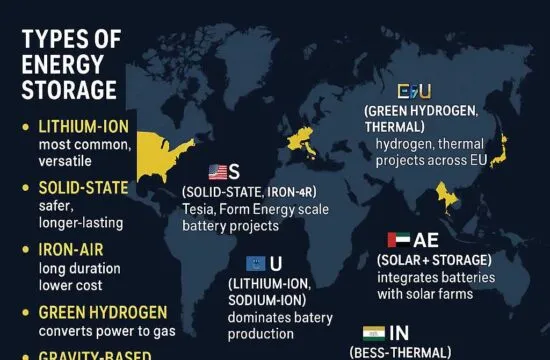Briefing for News Platforms
Summary:
As the world confronts the intersecting crises of climate change, food insecurity, and environmental degradation, a growing movement is gaining momentum across continents: regenerative agriculture. This approach, which draws on both ancient wisdom and modern science, is rapidly becoming a focal point for policymakers, corporations, and communities seeking solutions that go beyond sustainability—aiming instead for renewal and restoration.
The Urgency: Soil, Climate, and Food
Soil Crisis
The United Nations estimates that over a third of the world’s soils are already degraded. If current trends continue, the planet could run out of viable topsoil within 60 years—a timeline that brings new urgency to how we grow food.
Climate Connection
Healthy soils play a critical but underappreciated role in regulating the planet’s climate. Globally, soils store three times more carbon than the atmosphere. By rebuilding soil health, regenerative agriculture offers a scalable, low-tech way to draw down atmospheric carbon dioxide while also improving food production.
Food Security
Populations are booming, especially in countries like the United States, UAE, India, Nigeria, and Indonesia. Feeding billions sustainably, without further eroding the land or fueling climate change, demands new methods—and regenerative agriculture is at the forefront of these efforts.
What Sets Regenerative Agriculture Apart?
Unlike conventional agriculture, which often relies on monocultures, chemical fertilizers, and intensive tillage, regenerative agriculture centers on soil and ecosystem health. Its core practices include:
- Cover cropping: Growing plants specifically to protect and nourish soil during off-seasons.
- No-till farming: Minimizing soil disturbance, which helps retain moisture and beneficial microbes.
- Composting and natural fertilizers: Returning organic matter to the land.
- Rotational grazing: Moving livestock to mimic natural grazing patterns, which rebuilds grasslands.
- Agroforestry: Integrating trees with crops or livestock to create resilient, biodiverse landscapes.
The result isn’t just higher yields over time—it’s a farming system that restores land, conserves water, and supports communities.
Global Momentum and Local Innovation
United States:
States like California, Texas, and Montana are home to large-scale regenerative farms, some of which supply major supermarkets and food brands.
UAE:
Facing extreme desert conditions, UAE innovators are experimenting with biochar, hydroponics, and locally produced compost to build soil where none existed before.
Africa:
Countries such as Kenya, Ethiopia, and Ghana are investing in agroecological practices to reverse drought and land degradation, often led by smallholder farmers.
India:
The Indian state of Andhra Pradesh is on track to train six million farmers in “Zero Budget Natural Farming” by 2030—a grassroots movement that could reshape agriculture across South Asia.
Who Is Driving the Change?
- Corporations:
Companies like Nestlé, General Mills, and Patagonia are investing in regenerative projects, motivated by both sustainability goals and consumer demand. - Governments:
Many are launching soil health initiatives and offering incentives for regenerative practices, from the U.S. to African nations and the Middle East. - Youth and Education:
New generations of farmers are learning regenerative methods as a core life skill, not just a niche specialty. - Media and Influencers:
Documentaries like Kiss the Ground and social media campaigns are helping to popularize the movement, bridging the gap between science and the general public.
Lessons and Implications
Regenerative agriculture is more than a trend; it’s a paradigm shift. It offers one of the few proven pathways to restore degraded land, sequester carbon, and empower local communities—all while producing food. By connecting traditional knowledge with scientific innovation, regenerative agriculture provides a blueprint for resilience in the face of global challenges.
This movement is relevant to every region, but local context matters. Whether it’s reviving prairie lands in North America, greening deserts in the Middle East, or rebuilding resilience in drought-prone Africa, regenerative methods are being adapted and scaled worldwide.











